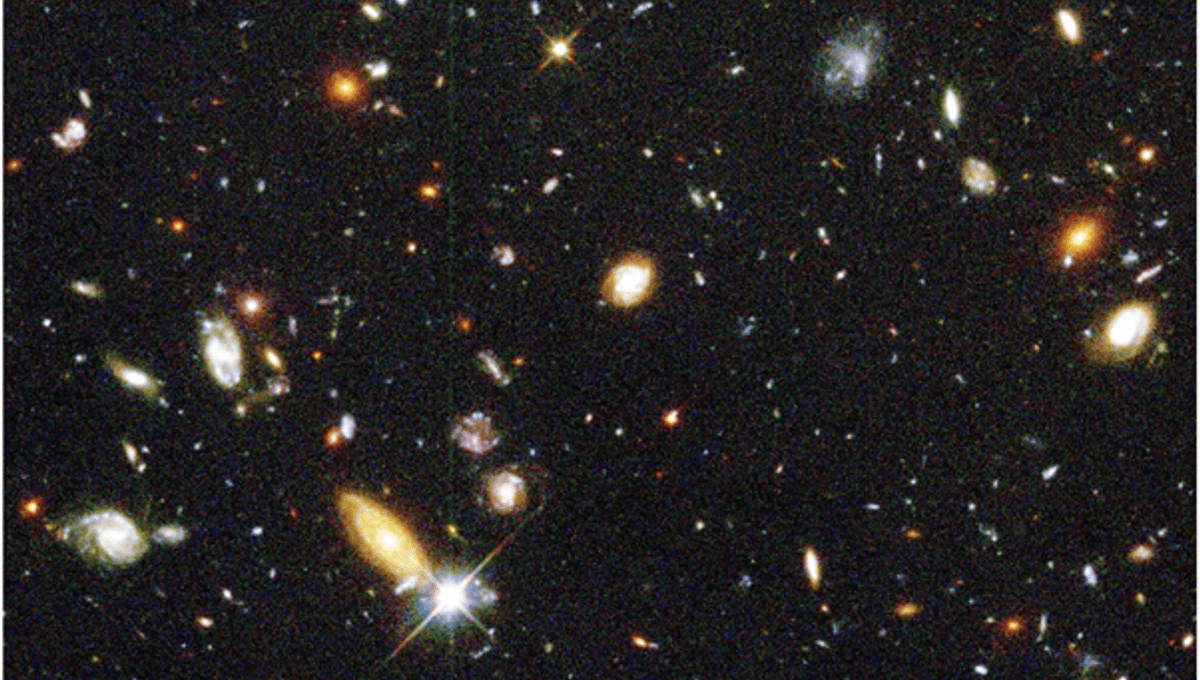
If you combine all the colors in the universe in proportion to the extent they are produced, you get a beige-ish white. Realizing that sounded a bit depressing, astronomers ran a poll for suggested names that would give the universe the PR boost it needs. Most suggestions centered on the similarity to milky coffee and Cappuccino Cosmico was the in-house choice. However, those who had made the identification pulled rank, and chose Cosmic Latte instead, although the full story has a few extra twists.
Around the year 2000, Dr Karl Glazebrook, then at Johns Hopkins University, started a project to determine the average color of the universe. Within the predominant darkness, the stars shine in many shades. Astronomers make great use of these colors, for example, to determine the age and size of individual stars.
Average colors are surprisingly important as well. Galaxies filled with hot, bright stars have a blueish tinge. Although such stars may represent only a small proportion of a galactic population, they emit so much light that a few can outshine a red and yellow majority.
Where star formation ceased a long time ago, however, red stars dominate, creating a distinctive average shade that marks a galaxy in decline. It’s much easier to construct such averages for galaxies that fit in a single field of view of a telescope than something we are inside. Glazebrook’s team was one of these trying to find the average color of the Milky Way to determine how our own galaxy compares to others we can see.
As a side project to determining whether we live inside a “dead red” galaxy, or a green one undergoing the transition from blue to red, Glazebrook and colleagues decided to be still more ambitious. By averaging data for from 200,000 galaxies, they hoped to measure the color of the universe as a whole.
Their initial announcement placed the entire universe as turquoise or greenish-white, not dissimilar to some estimates of the shade of our own galaxy. On a planet where green is the color of life-giving photosynthesis, this sounded appealing and won some positive coverage.
Less than a year later, however, the team acknowledged an error in the computer program they had relied on, marking themselves true scientists in acknowledging their mistake. The true shade was closer to white, with a touch of brown (#FFF8E7), they admitted, at least before being redshifted. Coming just a decade after a quiz show had deducted points from contestants for wearing beige, Glazebrook expressed his wish for the shade to be referred to under some more positive name.
Suggestions were sought – always a dangerous move – and Johns Hopkins researchers voted among the options presented. There was strong support for Big Bang Buff, but Cappuccino Cosmico had the most votes (The university only asked for people’s first choice, rather than adopting a preferential voting system that would have determined the views of the majority of its faculty).
Proving astronomy is not a democracy (Pluto-status aside), the authors of the paper rejected the poll’s outcome and chose Cosmic Latte, a name that has stuck ever since – even being adopted by the makers of lesbian and gay dating sites. Officially, they were attracted by the fact Italian, in which latte means milk, was Galileo’s native language, However, Glazebrook has since become Professor at Swinburne University, in the heart of a city that has made the quality of its café latte-making part of its identity, so there could be other explanations.
Twenty years later, the research stands, but the color scheme is very human-centric, rather than some eternal truth. Aliens may not be able to see in the electromagnetic spectrum at all, but that’s unlikely, given how outstandingly useful sight is, and how often it has evolved on Earth. On the other hand, there’s no reason to think they will favor the same part of the spectrum as we do. Science fiction films seldom mention it, but it’s quite likely the first extraterrestrial intelligence we encounter will see into what we consider the ultraviolet, like bees, or the infrared, like some snakes. If so, these may weight their perspective on the average color.
Hopefully they’ll still like coffee, however.
Source Link: The Average Color Of The Universe Is A Morning Wake-up Call